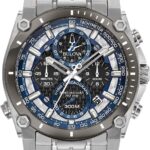
Grab Yours Today – Buy Now On Amazon!
Your Sales Price $389.95 - $379.95
Product Description


How An EPIRB or PLB Rescue Works
The Anatomy of a Rescue – Stage 1
When activated, EPIRBs and PLBs send a unique distress signal on the 406 MHz frequency to the Search and Rescue Satellites.
Each beacon is programmed with and sends a unique digital code called a HEX ID or Unique ID. The HEX ID identifies the type of beacon and, Search and Rescue use the HEX ID to identify the beacon registration information provided by the beacon owner.
This information can include: who the beacon owner is, the type of vessel the beacon is associated with (for EPIRBs), emergency points of contact, float plans, trip plans, and much more.
The Anatomy of a Rescue – Stage 2
After the satellite receives a beacon signal, it relays the signal to ground stations referred to as local user terminals (LUTs).
The LUT processes the data, computes the location of the distress beacon, and transmits a decoded alert message to its associated national Mission Control Center (MCC). This happens almost instantaneously after the initial beacon signal is received.
The Anatomy of a Rescue – Stage 3
The Mission Control Center then geographically sorts the data, and transmits a distress message to the closest appropriate SAR authority and another MCC if the beacon is registered to another country.
The RCC (Rescue Coordination Center) investigates the beacon alert and launches rescue assets to find the parties in distress.
Rescue Overview
406 MHz Distress Call Is Activated
Search and Rescue (SAR) satellites forward distress signal down to earth Ground Stations
Ground stations forward the distress to the Mission Control Centers (MCC)
The MCC alerts the closest Rescue Coordination Centers (RCC)
The RCC call emergency contacts and dispatch the closest SAR teams
SAR teams arrive on scene and rescue survivors
Worldwide – Over 48,000+ people rescued since 1982
United States – 9,753 people rescued since 1982
No Subscription Required
406 MHz Emergency Distress Signal / Homing signal
LED Strobe and Infrared Strobe
Global Coverage / Cospas-Sarsat / MEOSAR
GPS and Galileo GNSS
Price effective as of Sep 16, 2024 07:51:58 UTC
As an Amazon Associate Dealors may receive a
commission for purchases made through these links.










